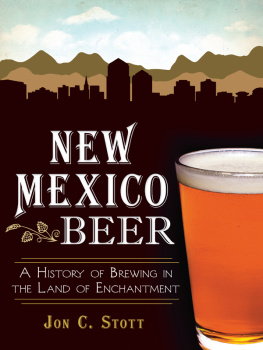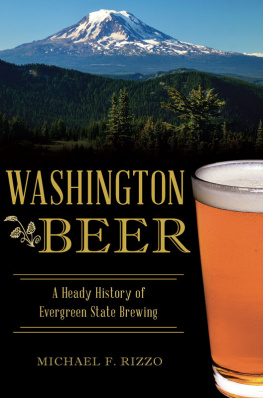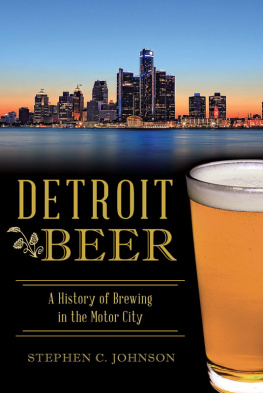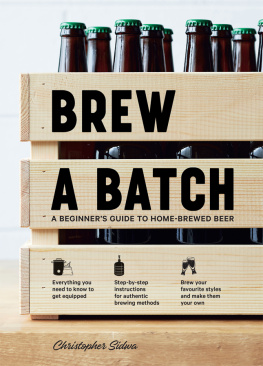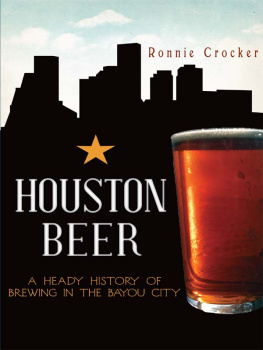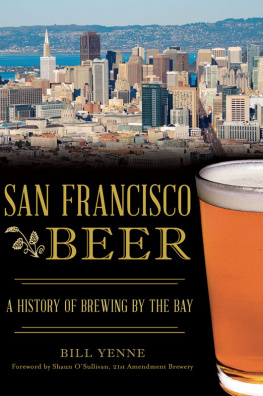

Published by The History Press
Charleston, SC 29403
www.historypress.net
Copyright 2014 by Alan McLeod and Jordan St. John
All rights reserved
Cover images: Grenville Brewery courtesy of Library and Archives Canada, Acc. No. 1977-18-60, Molson Portrait Collection, Molson Archives, Montreal, Quebec; image of falls courtesy of Artur Staszewski, Flickr.
First published 2014
e-book edition 2014
ISBN 978.1.62584.740.9
Library of Congress Cataloging-in-Publication Data
McLeod, Alan.
Ontario beer : a heady history of brewing from the Great Lakes to the Hudson Bay / Alan McLeod and Jordan St. John.
pages cm
Includes bibliographical references and index.
print edition ISBN 978-1-62619-256-0
1. Brewing industry--Ontario--History. 2. Breweries--Ontario--History. 3. Beer--Ontario--History. I. St. John, Jordan. II. Title. III. Title: heady history of brewing from the Great Lakes to the Hudson Bay.
TP573.C2M35 2014
338.476634209713--dc23
2014014067
Notice: The information in this book is true and complete to the best of our knowledge. It is offered without guarantee on the part of the authors or The History Press. The authors and The History Press disclaim all liability in connection with the use of this book.
All rights reserved. No part of this book may be reproduced or transmitted in any form whatsoever without prior written permission from the publisher except in the case of brief quotations embodied in critical articles and reviews.
CONTENTS
ACKNOWLEDGEMENTS
The authors thank their family and friends who have either come to share their joint obsessions with beer and history or supported the project with patience.
The authors thank the helpful staff of the libraries and archives they have relied on, in particular the staff of the National Library and Archives and the staff of Molson Coors Canada for their assistance in the review of the Molson corporate archives. The authors are grateful for the work of those who have created web-based archives of newspapers throughout Ontario, such as the Kingston Gazette or the Essex Free Press, from the 1790s to the present day. They have gained a deeper admiration for the authors who preceded them who were not able to access these resources as easily. The authors are also grateful for the work of other writers who have taken on the topic of beer in Ontario, including Ian Bowering, Ian Coutts, Steve Gates and Craig Heron, as well as historians Jane Errington and Brian Osborne.
The authors also thank the many craft brewers of Ontario who took the time to discuss and support the research required as part of this projectin particular, Steve Beauchesne of Beaus All Natural Brewing Company in Van Kleek Hill and John Graham of Church-Key Brewing in Campbellford. They also thank those who sell the provinces good beer in the pubs and restaurants where they have brooded separately or argued with each other.
INTRODUCTION
Writing any history of Ontario poses a particular problem. Without a defining foundational event like the victories of Lexington and Concord or the conquest of the Plains of Abraham, Canadas largest province can appear to lack a single foothold on which to base understanding. Ontario as we know it today began as a planned societya Georgian British ideal. The first street grids of cities like Kingston and Toronto were laid out before the people arrived. The orderly surveys that created the grid of the generous concession lots in the countryside were mainly drawn before the farming families were settled and their plows broke the earth. Established to serve as an ideal society based on a particular mix of conservative and progressive values, the communities of Ontario succeeded in large part because of where they were located, whether at a rivers mouth or near rich farmlands, as much as due to any political theory.
The history of brewing in Ontario goes farther back and both illustrates and serves as a guide to the growth of the provinces society. As a functional necessity, beer and other forms of alcohol were present when the first explorers came to the region, followed by European empires seeking to control the export of furs and pelts while attacking the trade routes of their competition. Even before the conflicts of the eighteenth century among the British, French, Dutch, American and First Nations, the indigenous peoples of Ontario were in contact with the French empire from the expedition of Jacques Cartier up the Ottawa Valley. The Jesuit missions in the first decades of the 1600s in the south of Ontario, as well as the first forts and factories of the Hudson Bay Company in the north by the 1670s, were reaching out and seeking alliances with the First Nations.
Brewing was a part of the history of European settlement because beer was a normal part of the European diet. Just as explorers and traders in the 1600s brought casks of beer and barrels of malt to ensure supply, breweries were planned and built starting in the late 1700s in the river mouth towns, where the grains from inland farms were brought by mercantile interests for shipment out to the empire just as furs and pelt had been from the early 1600s. These breweries were built under government authority to supply the military that protected the young colony from the expansionist pressures and new democratic ideas developing to the south in the newly independent United States.
As communities strengthened throughout the Victorian era, government-licensed taverns that served as pioneer community centres were replaced by private inns and supplied by private breweries serving the commercial interests of their owners. As industry expanded and the borders of Canada moved west and north, Ontarios brewing industry expanded and consolidated into the large industrial scale recognized today. In the final third of the twentieth century, home-brewing, brew-on-premises and craft brewing, as well as buck a beer discount brewing, represent reactions to mega industrial beer as Ontarios economy responds to greater demand for consumer choice. They also represent some level of reaction against Ontarios traditional trust in a centrally administered, well-regulated society that both protected established interests and distributed wealth widely.
In many ways, the history of beer in Ontario is the history of Ontario. As a daily part of the diet to an industrial product that took its place in the national and international marketplace, the laws and cultural norms of Ontario throughout its history can be understood by their relation to beer.
CHAPTER 1
EXPLORATION AND EMPIRES
1600s1775
The first two centuries of European contact from the early 1600s to the late 1700s within the lands that would come to be known as Ontario were marked by explorations undertaken for a mix of commercial, religious and political goals. Colonization of the region was not within the practical plans or resources of either the French or English (then British) empires. Ontario was populated by a number of First Nations who provided the Europeans with military and trade alliances. They also vastly outnumbered any local European population. There was little incentive to create towns in the interior of the continent much beyond the inland reach of the salt waters of the Atlantic. However, over the course of this period, brewing would be present in ways that illustrated the interests of each culture. The functional role that beer played in their societies would prove similarly distinctive.
Next page



